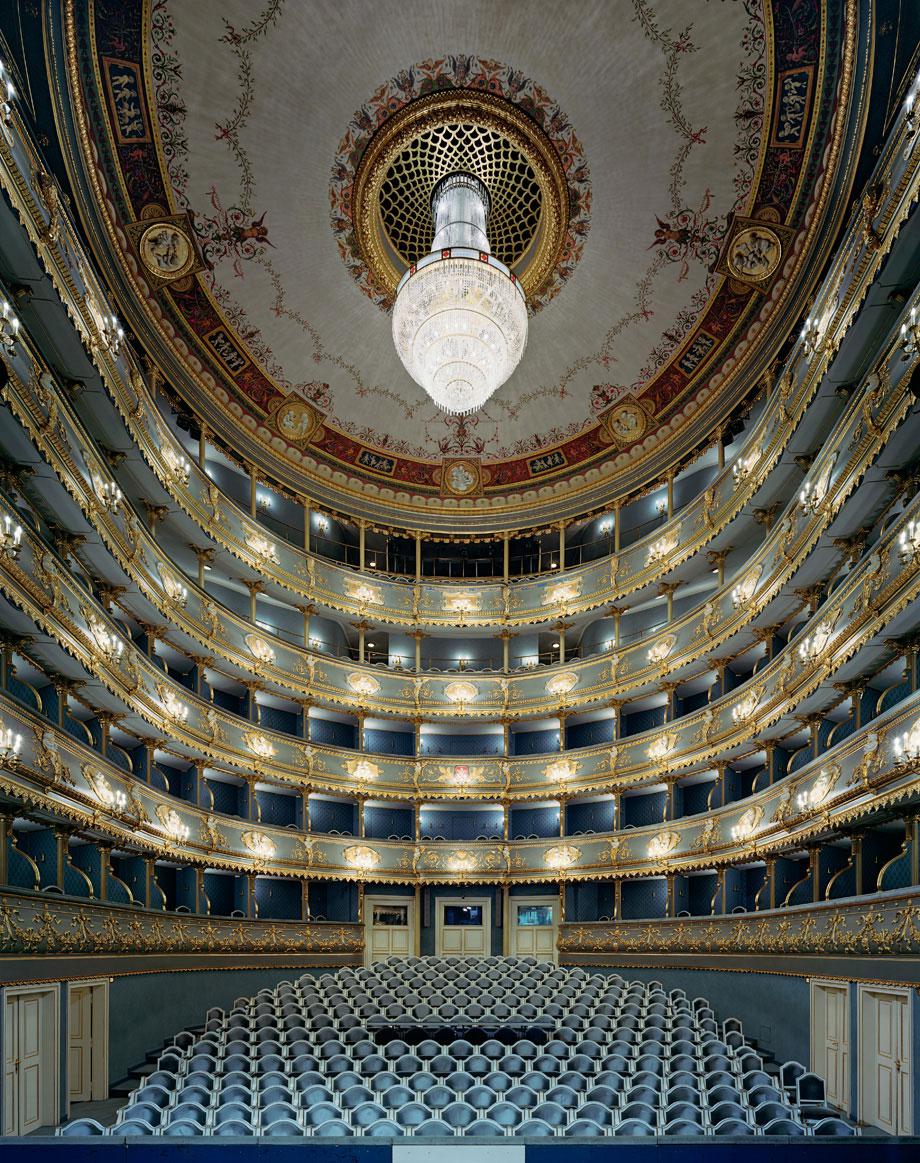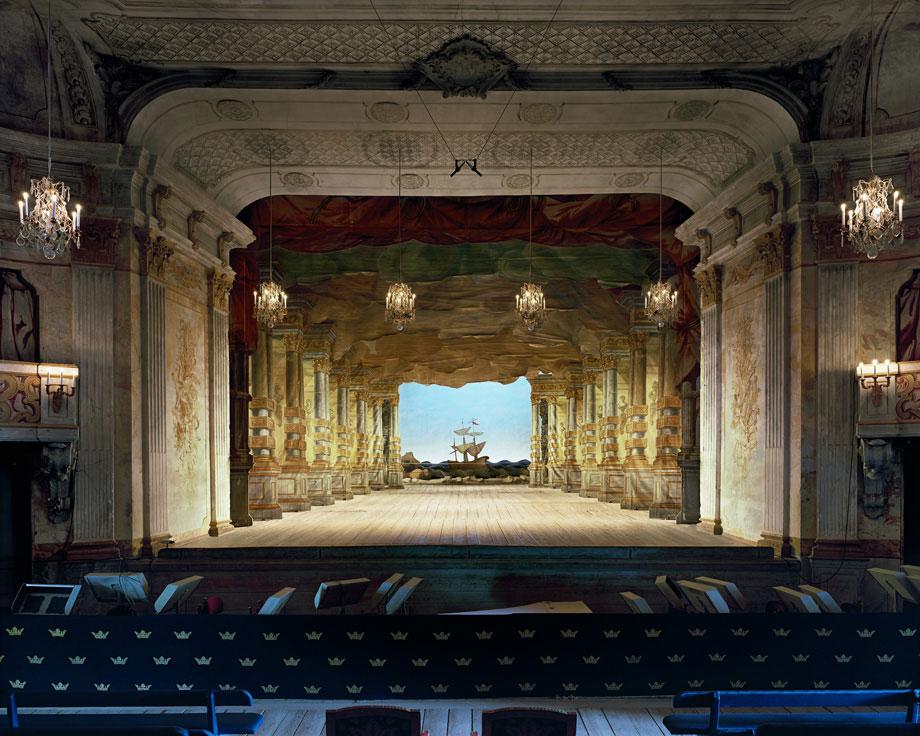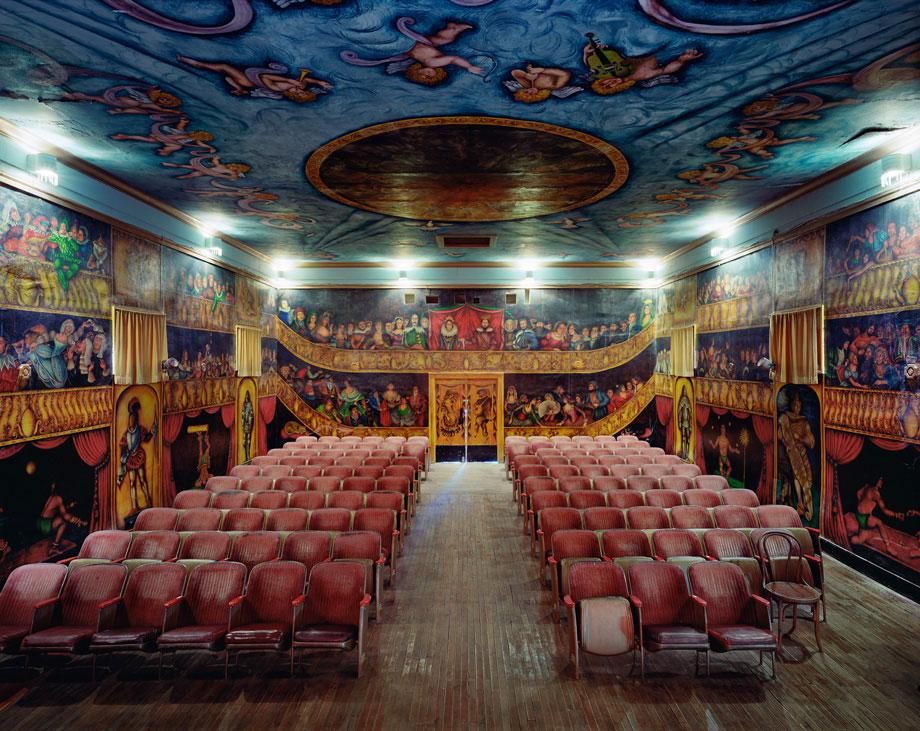Photographer David Leventi started out thinking he would be a reportage photographer. He admired Henri Cartier-Bresson and street photography, began his career interning in the archives at Magnum Photos, and shot with a Leica camera searching for the elusive “decisive moment.”
But things started to change when he began working for photographer Robert Polidori.
“I came to appreciate the different type of beauty exhibited by large-format photography,” Leventi said. “One of immersion, the ability to print photographs so large and clear that they make you feel as if you are enveloped in and existing within a space.”
Leventi used that experience beginning in 2007 when he began documenting some of the most famous opera houses around the world, creating the series “Opera.”

David Leventi

David Leventi

David Leventi
Leventi’s childhood memories are of his grandfather singing around the house. Leventi said he was good enough to have been a professional tenor but was interned in a Soviet prisoner-of-war camp from 1942-1948. Leventi said “Opera” pays homage to the dreams of his grandfather.*
“In a way, taking a photograph with an 8x10 camera is like performance art, there’s an act to it, so this idea of light and sound being very similar the way they interact … the idea of standing on center stage and being in all these opera houses where he could have performed if there wasn’t the war and all these other circumstances, communism, etc. … I guess you can say I’m living out our dreams.”
The son of two architects, Leventi said he “learned over time to organize the chaotic world around me into a compositionally organized grid.”
Shooting mostly with an 8x10 Arca-Swiss camera, Leventi takes each shot from the spot at center stage where a performer would stand. To light the images, Leventi uses only the existing chandeliers in the houses. “Though the proportion of the spaces varies, the goal is to attain both lateral and vertical symmetry in each image, thus flattening out the space in perfect equilibrium,” Leventi said about his process.
The first house Leventi photographed was the Romanian Athenaeum in Bucharest, Romania. He was there working on documenting his family’s history in the country and was given permission to photograph the house.
“It was an impressive-looking interior,” Leventi began. “Awe-inspiring, with so many ornate details. Standing alone inside the massive hall, there was a power emanating from the space.”

David Leventi

David Leventi
“I love the architecture of them, the way they look inside,” he says about the buildings. “They are living museums. … I believe that the space itself can be the event. I remember going to see War and Peace with my grandma at the Metropolitan Opera in New York City. Everything onstage looked like a grand history painting, but it was alive. It was a spectacle!”
Although he has been around the world documenting the houses, he has never shot the Sydney Opera House, something he is asked about often. Although one of the most recognizable houses—from the outside—Leventi said the interior is probably anti-climatic. “If you ask anybody to describe what the inside looks like, I don’t think they will be able to.”
Of all the houses, the one that stands out for Leventi is the Teatro La Fenice in Venice, Italy. “Compositionally for me, it fit into the 8x10 camera perfectly. I love the color palate, love the music stands; I love everything about it.”
The images he included in “Opera” have been selected because of their interiors, their history, or because they have interesting stories. For example, “The Amargosa Opera House in Death Valley was built in the late 1960s; it’s interior is a vernacular trompe l’oeil masterpiece painting by Marta Becket that references the grand old opera houses of Europe,” Leventi recalled.

David Leventi
As for when the project will end, that’s up in the air. “There is always one more opera house I would like to photograph,” Leventi said.
Leventi is currently having a solo exhibition in Madrid at Galeria Patricia Acal, which is part of PhotoEspana2013.

David Leventi
His next solo exhibition will be held this October at Bau-Xi Photo in Toronto.
*Correction: This paragraph did not appear the original version of this post, and has been added for clarity.
